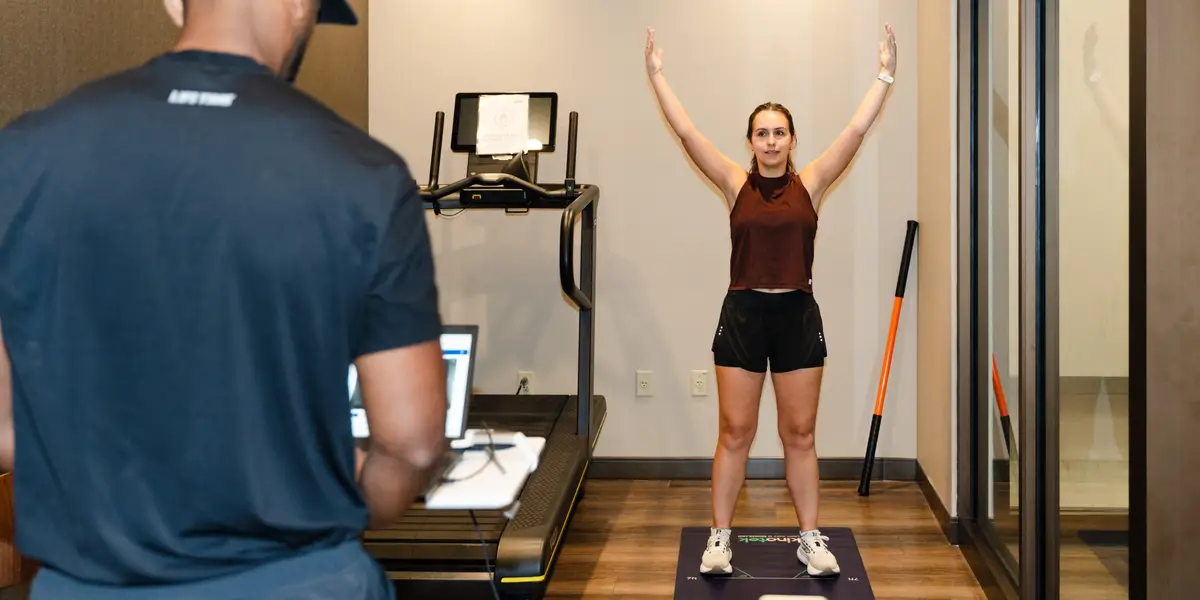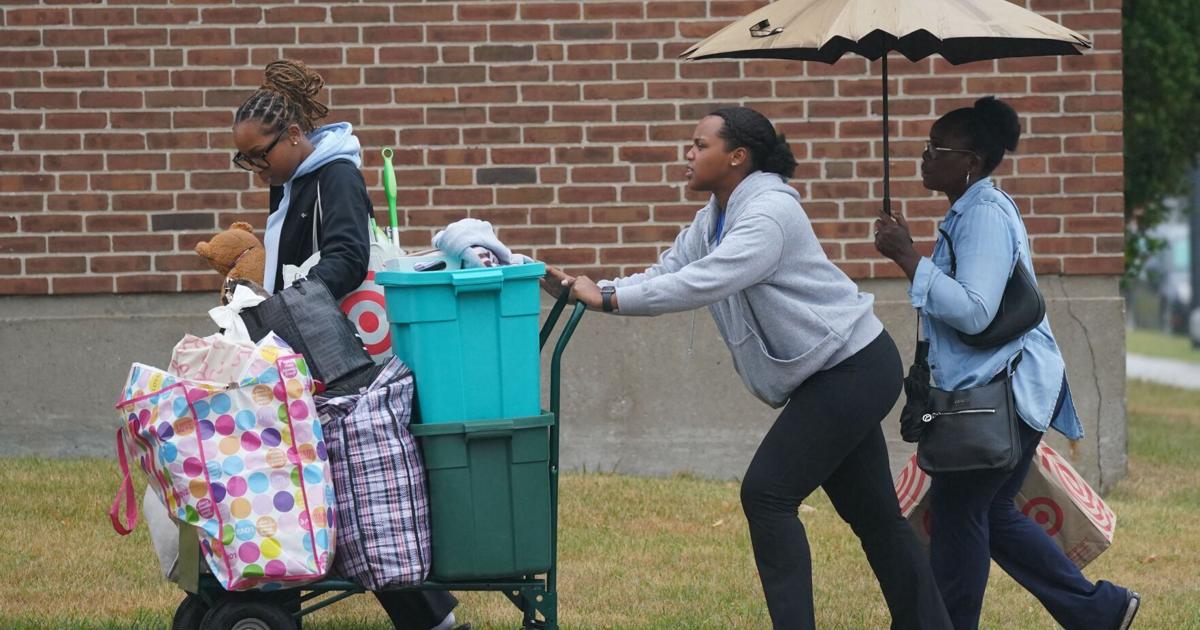
No matter how sore I’ve gotten, how many personal trainers have commented on my tight hamstrings, or all the data that supports doing regular mobility exercises, I simply do not stretch.
I don’t want to be this way. I’ve tried to stop slouching by setting reminders to stretch and wearing a posture-correcting necklace, only to repeatedly break both habits. I’ve even enjoyed the occasional yoga classes — until I topple over trying to hold a pose. Then I stop going.
I’m not alone. Once a concern of older generations, mobility and flexibility are now the longevity trends du jour among millennials and Gen Zers.
I’ve gotten assessments that measured my body fat percentage and VO2 max through the athletic club Life Time, leading me to change my workouts and cut down on ultra-processed foods. I decided to try Kinotek, a functional movement assessment that would measure my mobility, a test I was sure I’d flunk.
Up until recently, doctors physically measured mobility using protractors. Tools like Kinotek, launched in 2022, use 3D visuals to provide more in-depth information, such as asymmetry in the body. Companies like Kinetisense and DARI Motion offer similar services, both of which are FDA-cleared to be legally marketed. (Kinotek is registered with the FDA, which means that the company can sell its product in the US.)
While these tools alone can’t diagnose conditions like scoliosis (which requires an X-ray), they can still provide helpful information about the basics.
Doctors, while skeptical of costly fads, welcome the extra information.
“On that premise, I really like what the space is trying to do — we just want better data points and have better ways to actually measure basic function, which includes range of motion,” Dr. Vivek Babaria, a board-certified interventional spine and sports medicine physician who is not affiliated with Kinotek or Life Time, told Business Insider.
The test taught me that while I’m indeed a danger-zone stiff in one area, some workouts have paid off in slowly improving my mobility. I also learned what I need to do to keep things from getting worse (you’ll never believe what they are!).
Related stories
Business Insider tells the innovative stories you want to know
Business Insider tells the innovative stories you want to know
The test was quick and simple
Before we began the test, Donovan Stewart, a personal trainer at Life Time, took a look at the soles of my shoes. Based on the wear, he said I was right-leg dominant, which could suggest some imbalances later in the assessment.
The test itself was simple and took about 10 minutes. I stood in front of a camera and mimicked Donovan’s movements, such as squats, shoulder rotations, and hurdle steps while holding a pole.
I learned exactly what my weak points are
While my results weren’t stellar, I didn’t perform as poorly as I thought I would.
They showed me where I had lower range of motion and asymmetry (the areas in red). I also learned where I had good mobility, like in my right hurdle step (Yes, I am holding on to that fleeting sense of glory). Stewart also said my squat form looked good — something I’ve been actively working to improve in my strength training classes.
Still, I saw lots of early warning signs of future health issues in my chart. While I feel fine now, Stewart advised me to start doing the work now to avoid pain in decades to come.
Left ignored, the consequences can be serious. Babaria said tightness now can lead to conditions like early onset arthritis (arthritis before 30) or frozen shoulder. “The range of motion continues to degrade, and then that turns into pain,” he said, as the joint starts to break down over time. “That sooner breakdown causes more pain.”
Stewart suggested common, easy stretches for my shoulders and classic yoga poses like cat-cow and downward-facing dog.
Heavier workouts alone won’t fix my desk-centered lifestyle
Ironically, the only area I performed poorly in was the move I thought I nailed. Stewart asked me to bend my arms at 90 degrees and raise and lower them. Easy.
I learned that my shoulder rotation is both asymmetrical and stiff. A common cause of that? Spending most of the day curved over a desk.
“We can clearly say that Americans are moving less and sitting more, which is causing a lot of postural changes,” Babaria said. People who work full-time desk jobs can lose mobility in their arms because “you end up having your shoulders roll inward,” Babaria said.
He added that with any movement, you always want to have a counter-movement (such as a push to a pull) to avoid your joints morphing into more restrictive patterns. So if you do a bench press (a push movement), you should follow with a row (a pull). I scored the lowest in external shoulder rotation, and I rarely do anything to offset how rolled-in my upper body is.
Like many Americans, I’ve been thinking more and more about my longevity, taking up strength training for over two years to offset future muscle mass loss. Unfortunately, Babaria said those alone won’t save me. In fact, without stretching, they can even make my body more rigid.
He’s seen first-hand the risks of taking intense workout classes to mitigate sedentary lifestyles. Patients are going from sitting all day to performing challenging movements without stretching first.
“We’re seeing the very fit population get hurt more frequently because they’re going for more explosive movements,” he said. In the long run, it makes them more prone to injuries.
As hard as it was to hear this — and watch 3D-animated diagrams of my lopsided shoulders on Stewart’s computer — I’m glad I learned more beyond the vague guidance to stretch. If anything, it was encouraging! I’m not as inflexible as I thought.
Right before the assessment, I started taking Pilates classes, which are excellent for building mobility. I used to opt out of these workouts, knowing I’d just collapse on the ground 15 minutes in.



